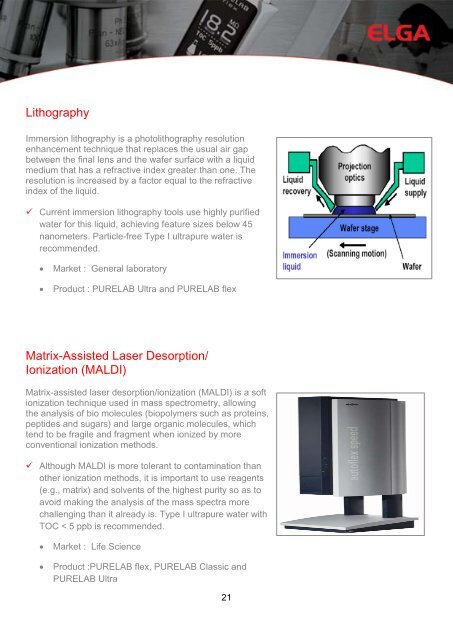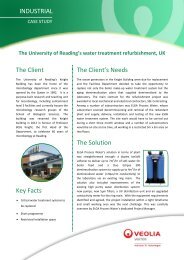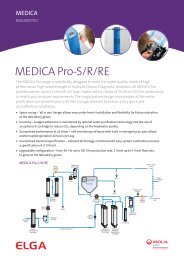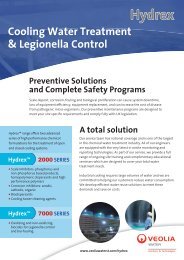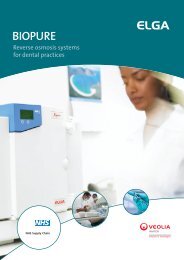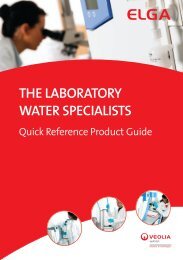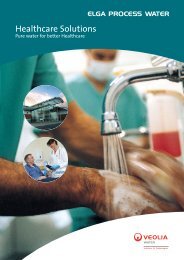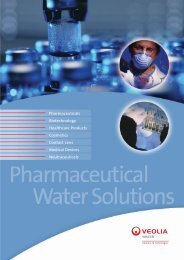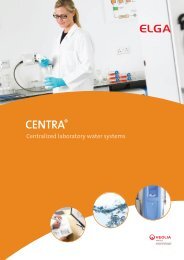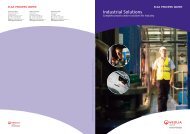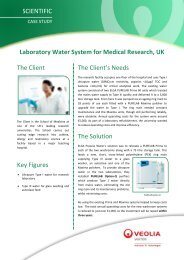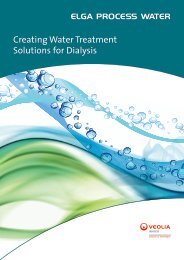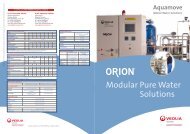Application Quick Reference Guide
Application Quick Reference Guide
Application Quick Reference Guide
You also want an ePaper? Increase the reach of your titles
YUMPU automatically turns print PDFs into web optimized ePapers that Google loves.
Lithography<br />
Immersion lithography is a photolithography resolution<br />
enhancement technique that replaces the usual air gap<br />
between the final lens and the wafer surface with a liquid<br />
medium that has a refractive index greater than one. The<br />
resolution is increased by a factor equal to the refractive<br />
index of the liquid.<br />
Current immersion lithography tools use highly purified<br />
water for this liquid, achieving feature sizes below 45<br />
nanometers. Particle-free Type I ultrapure water is<br />
recommended.<br />
• Market : General laboratory<br />
• Product : PURELAB Ultra and PURELAB flex<br />
Matrix-Assisted Laser Desorption/<br />
Ionization (MALDI)<br />
Matrix-assisted laser desorption/ionization (MALDI) is a soft<br />
ionization technique used in mass spectrometry, allowing<br />
the analysis of bio molecules (biopolymers such as proteins,<br />
peptides and sugars) and large organic molecules, which<br />
tend to be fragile and fragment when ionized by more<br />
conventional ionization methods.<br />
Although MALDI is more tolerant to contamination than<br />
other ionization methods, it is important to use reagents<br />
(e.g., matrix) and solvents of the highest purity so as to<br />
avoid making the analysis of the mass spectra more<br />
challenging than it already is. Type I ultrapure water with<br />
TOC < 5 ppb is recommended.<br />
• Market : Life Science<br />
• Product :PURELAB flex, PURELAB Classic and<br />
PURELAB Ultra<br />
21


